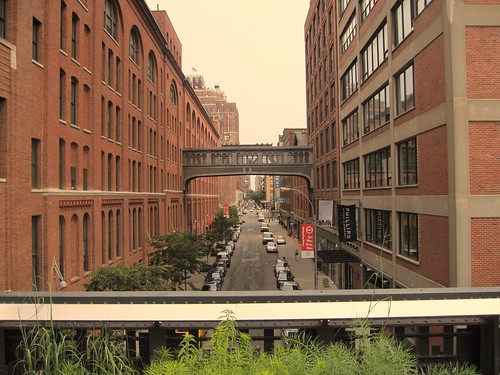All day long, as I look from the 14th
floor window of my new office in midtown Manhattan sixth avenue Central Park . Then the lights change
and two ant-like swarms of pedestrians march out from either side of Sixth Avenue 51st street
The answer, I’d suggest, lies in the
similarities between renting a New
York America Brooklyn loft for my family. Everything from
whether the building had ever had a bed bug infestation to whether we needed
guards on the windows to protect the children was carefully and methodically
spelt out. On the roads, a far higher proportion of intersections in New York are traffic light controlled than in London
Even more corrosively, the burden of rules
can send a message to road users to abandon judgement and good sense. The red lights
protecting roads on the Greenway seem to me a subtle message that the rules are
arbitrary and weighted against cyclists. While it’s unfortunate, it’s small wonder that so many then go on to ignore the rules designed to protect
pedestrians at crossings.
Then, every now and again, between the woodlice
and the ants appears a gnat – a bicycle picking its way around the parked cars
and zig-zagging between the pedestrians. Both the pedestrian-ants and the
woodlouse-cars seem impatient with them. It is, after all, especially clear
from my vantage point that the bicycles – dodging out behind stopped cars,
darting between the ranks of cars stopped at lights – travel in very different
lines from the straight up-and-down or across-town of most other Manhattan
 |
| West 15th Street: Orderly, but not in a very human way |
The view from my window has sprinkled yeast
on an idea that’s been fermenting in my mind all the three weeks I’ve so far
been cycling around New York New
York London
When I tell people I’m cycling in New York,
it conjures up a mental picture for most of my pedalling down some vast
Manhattan avenue, skyscrapers towering over me and threatening streams of cars,
trucks and buses roaring past. In fact, most of my Manhattan Pennsylvania 7th Avenue
I was suddenly after leaving the Broadway
bike lane one of the gnats I could see from my office window, navigating along
the line of parked cars to the side of four roaring streams of traffic. At
cross streets where the lights were in my favour, I would still frequently face
obstruction from a turning car, trying to nose its way through the cross-street
pedestrians but stuck in my path. I had to maneouvre out round each, trusting
that I wouldn’t find myself, if one of the vehicles made a sudden change of
course, heading for a collision.
The 7th avenue London
 |
| The West Side highway, with the Hudson River Greenway: a chance to watch nearly every road user type breaking rules. |
I face a different set of challenges using
the Hudson River Greenway. The Greenway may, as I’ve noted before, be the
finest piece of cycling infrastructure in the English-speaking world. It’s
spacious, largely unaffected by traffic and offers fine vistas across the river
to New Jersey
Yet, despite the numerous signs telling
them to follow their own path, the cycle track is thick with runners, often
pushing strollers (baby buggies, for British readers). Overtaking them safely
requires a swing into the opposite lane, often into the face of an oncoming
cyclist intent on maintaining the appropriate tempo for his triathlon training.
The Greenway is also, while less stop-and-start than a Manhattan Avenue 30th street
The traditional response to all these
different forms of chaos is to bemoan road users’ failure to obey the rules.
The still-more traditional response is to berate cyclists as if they were the
only ones breaking them. There is obviously some merit in wishing road users
were generally more careful of others’ needs. I was certainly embarrassed on
behalf of cyclists generally when, one Sunday morning, I watched a string of
speeding cyclists yell out of the way cruise passengers trying entirely
legitimately to use a crossing on the Greenway.
But it’s more interesting, I think, to
examine why New York ’s traffic system seems to
encourage possibly even more widespread rule-flouting than London
 |
| Police horses on Sixth Avenue: not every animal in the traffic is metaphorical |
That stems in part from an admirable
instinct. The United States
Yet there’s a risk, as with any regulation,
that it becomes like the Russian tax system – so onerous that, because no-one
can fully follow it, it hands arbitrary power to the rule-enforcers. With the
apartment, the bureaucratic problems seemed insurmountable until I threatened
to take my business elsewhere and the formalities concluded suspiciously
speedily. As a cyclist, it is surprisingly difficult heading along a Manhattan
 |
| Greeley Square, in midtown: tailored to motorists' speed, rather than cyclists' comfort |
None of this is to say that New York London London London
But I can’t help thinking a slight change
in New York